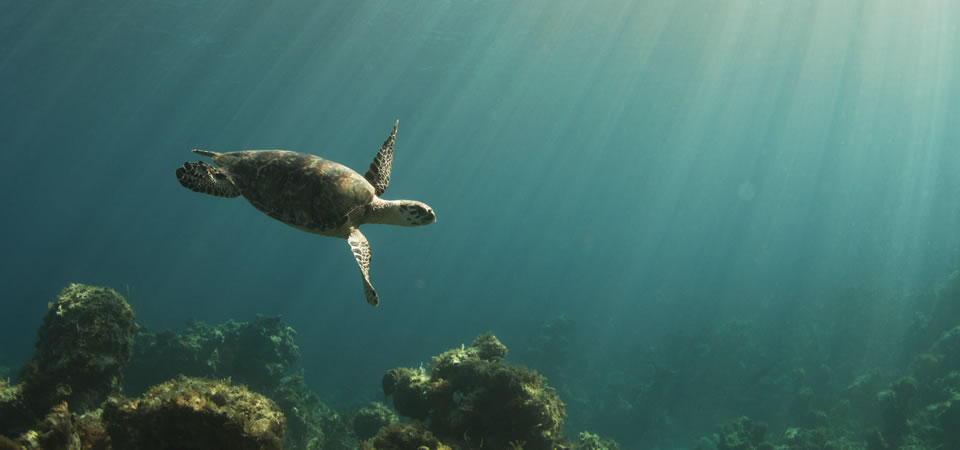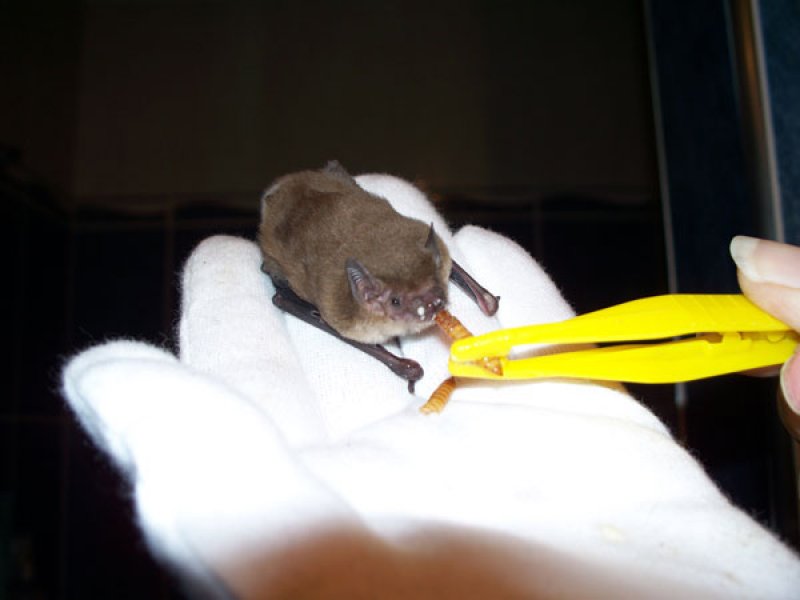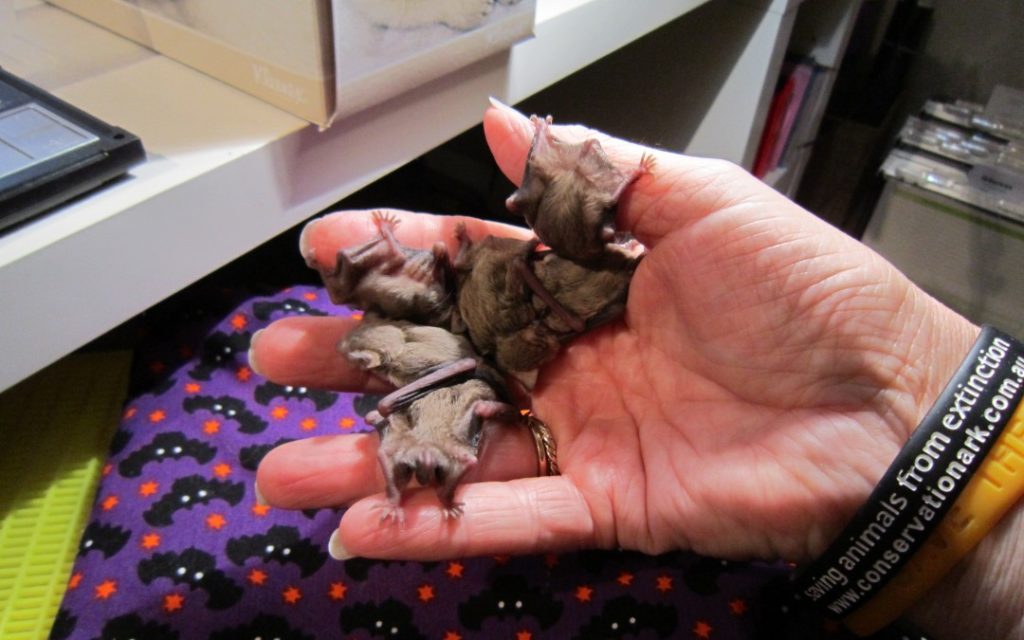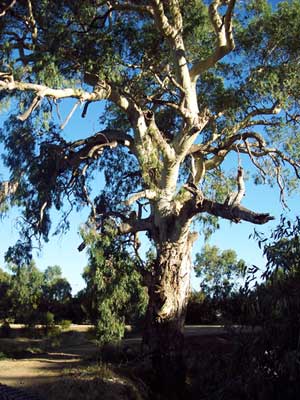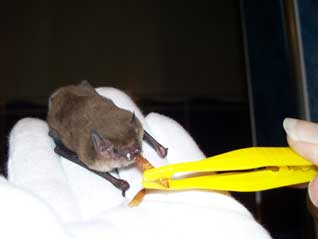Sea turtles have been returning to the land for over 100 million years to lay their eggs, but today their populations are experiencing detrimental human-induced impacts which threaten their extinction.
The purpose of this study is to cover the threats our sea turtles face, in Australia and around the world.
- Types of turtle on the Sunshine Coast
- Threats to Sea Turtles
- Tracking Sea Turtles for Science
- Sea turtle books for young and general readers
- References & Further Research
Types of turtle on the Sunshine Coast
On the Sunshine Coast of Australia, the most prominent species to lay eggs on our beaches is the Loggerhead (Caretta caretta). To a a lesser extent the Green Turtles (Chelonia mydas).
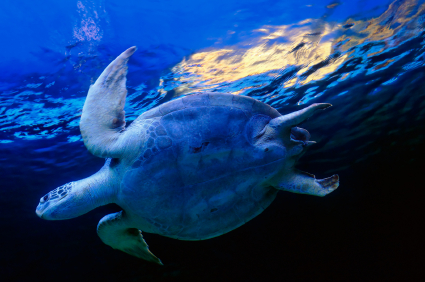
To give you an idea of the importance of protecting these turtles, the number of Loggerhead Turtles on Australia’s eastern coast amounts to as little as 500 nesting females, which makes the Sunshine Coast population a small but very important sub-population.
The Sunshine Coast is also home to the Flatback turtle (Natator depressus) and Hawksbill turtle (Eretmochelys imbricata).
That makes the Sunshine Coast home to four of the seven recognised species of sea turtle in existence today:
- Green turtle (Chelonia mydas)
- Loggerhead (Caretta caretta)
- Flatback (Natator depressus)
- Hawksbill (Eretmochelys imbricata)
- Leatherback (Dermochelys coriacea)
- Olive ridley (Lepidochelys olivacea)
- Kemp’s ridley (Lepidochelys kempii)
Threats to Sea Turtles
There are many threats to our sea totals, but the below five are considered the most significant:
- Plastic
- Foxes
- Pacific Adventurer oil spill
- Discarded fishing line
- Ghost nets
Let’s take a look at these five threats in more detail:
Plastic in the marine environment
If someone had suggested a hundred years ago humankind would create a material so resilient and pervasive it would become a toxic unsightly legacy that would help push individual species to the brink of extinction, we would’ve thought they were joking.
Of course such a scenario was never the intention. It is, however, today’s reality, and plastic can seriously undermine entire ecological systems.
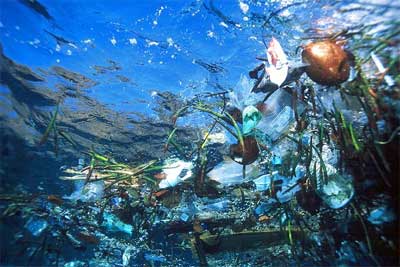
While the issue of plastic supermarket bags continues to be handballed around the political arena, more than 1 million marine animals die every single year from entanglement in or ingestion of a whole range of anthropogenic debris, mostly plastics and other synthetic substances.
Whereas effort has been made to reduce the number of plastic bags in circulation, we still consume many products contained or made with plastic, which are often discarded without consideration for the environment.
The staggering quantities of plastic waste trapped in the North Pacific Subtropical Gyre raises great concern, especially with the vast quantities of plastic waste accumulating daily.
When such information passes the public eye, such as an event, article, or documentary, we often ask “How can this happen?”
The North Pacific Subtropical Gyre, as a key example, is an area of ocean fifty times the size of Tasmania.
How can such an area by covered in plastic so thick it looks like a solid surface?
This gyre is affected by a combination of ocean and atmospheric currents which combine to capture and hold the waste, which makes it an unnatural ocean “landfill” on a scale few of us can comprehend.
In fact, while the plastic soup in the north Pacific is shocking beyond belief, the problem is by no means confined to that area.
Consider this – today almost anywhere on earth a scientist can examine a cup of sand or seawater and find a range of plastics in a variety of sizes.
So how does this happen?
Problem #1: Plastic is not biodegradable
No one can say exactly how much plastic has been manufactured since its invention but one thing is known for sure – all of it is still with us.
Plastic is not biodegradable.
Organic material such as food scraps or paper will eventually break down to become carbon dioxide and water. Plastic on the other hand is bio-inert, which means it is chemically very stable and will not degrade like naturally occurring materials.
Instead, plastic will be progressively weakened by sun and sea until it becomes brittle and breaks up into increasingly smaller pieces. It will not reduce to carbon dioxide and water.
Problem #2: We have a heavy reliance on too much plastic
Simply put – we use way too much plastic.
Our food packaging system relies almost entirely on plastic, and the common method of marketing other goods means the majority of non-food consumables are also packaged in plastic.
In Australia alone more than 700 million litres of bottled water are consumed every year.
Each bottle might take on average a couple of minutes to consume, but hundreds of years from now the bottle will still exist.
Problem #3: Plastic is easy to discard as litter
Plastic is very lightweight and can easily be blown directly into the ocean or make its way there via urban drains, creeks and rivers.
In years gone by, many countries also dumped millions of tons of municipal garbage directly into the ocean.
While this practice has almost stopped, the legacy is enduring to the point that in many areas of the ocean surface plastic outweighs plankton.
Some countries still discard plastic waste into our oceans.
How does plastic threaten marine life?
The effect of plastic on marine life can be devastating.
Minute particles of plastic are consumed by the filter feeder organisms that form the base of the marine food web.
This presents two problems in that plastic materials themselves are known to be toxic and they also appear to act as a sponge for other pollutants which are taken up by the filter feeders.
As the plastic molecules progress through each trophic feeding level, animals at the upper trophic levels, such as birds, fish, marine mammals and sea turtles can accumulate increasingly larger quantities of toxins in their bodies.
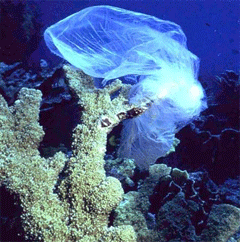
Larger pieces of plastic present an additional problem. Some plastics, when in water, can look remarkably like an animal’s natural food. When an animal consumes these plastics, it can clog up their digestive system leading to prolonged and painful internal injuries, often resulting in death.
Worse yet, as the dead animal decomposes the plastic is freed, relatively intact, to be ingested by another marine animal that may again mistake it for food.
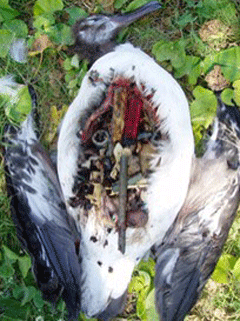
Because plastics are extremely variable in their composition, colour and shape they tend to break down to produce a correspondingly infinite variety of shapes, sizes and colours.
This diversity increases the availability to a wider range of organisms.
For example, sea turtles can mistake plastic bags for jellyfish; filter feeders (including the larger baleen marine mammals) inadvertently take up large quantities of plastic; and seabirds, particularly surface feeders, ingest large quantities of plastic both directly from the surface and through ingestion of fish and other prey.
What can we do to reduce plastic in the environment?
To most of us the problem seems almost insurmountable when we are confronted with so few alternatives to the plastic packaging that dominates the market today.
Here are some ways we can help reduce plastic in the environment:
- Tell governments and manufacturers we have made a mistake and it is a mistake that needs to be urgently rectified. We need to let them know it is not acceptable that a chocolate bar which takes 30 seconds to eat is packaged in a wrapper that will persist in the environment for hundreds of years. It is not okay that a disposable plastic bottle used to hold a drink that can be consumed in minutes will contribute to the already staggering millions of tons of plastic waste littering the planet.
- Modify your personal buying habits, and encourage others to do the same. If possible, avoid products packaged in plastic, especially those which are over-packaged.
- Minimise your use of takeaway food and drink containers. For example, carry a drink bottle from home in preference to buying bottled water.
Foxes as a threat to sea turtles
Foxes are a serious threat to turtles and other native wildlife on the Sunshine Coast.

Introduced to Australia in the mid 1800s for hunting purposes, the European Red fox (Vulpes vulpes) can now be found in every part of the Australian mainland, except the tropical north.
The fox is regarded as one of the most elusive animals in the world, which is probably why people are generally surprised to learn that there are an estimated 7 million foxes in Australia.
That’s around one fox for every three Australians!
It is estimated it took only 100 years for foxes to achieve their current distribution in Australia, which is not surprising when you consider the following:
- Foxes are extremely adaptable, being equally at home in coastal dunes, bushland, urban environments and agricultural landscapes. In Australia the population density in urban areas is estimated to be around 12/km2 (in Melbourne as high as 16/km2).
- Foxes are sexually mature from about 10 months of age.
- Foxes mate once a year in winter and produce on average four pups but can have as many as ten per litter.
- Around the age of 6 to 9 months foxes will disperse from where they were born. Females usually disperse 3-15km and males 11-43km, although distances much longer have been recorded.
- Foxes are primarily carnivorous scavengers and opportunistic predators that are well adapted to utilising a varied diet.
- Depending on breeding and immigration rates, fox populations can withstand up to 75% yearly mortality rates.
Foxes have long been recognised as a serious threat to much of Australia’s wildlife – not only turtle eggs and hatchlings.
Australia’s wildlife has not evolved in the presence of foxes and consequently usually lacks the necessary skills to avoid fox predation.
To give you an idea of the potential impact of foxes in Australian ecosystems, consider the following:
- Any animal up to 5.5kg may be taken as prey, which includes the majority of Australia’s mammals and almost all of its reptiles, birds and insects.
- A single fox eats an average 400g of food per night, or 150kg per year, made up of a huge range of human scraps, mammals, reptiles, birds and invertebrates.
- The fox is known to have caused the extinction of at least 6 Australian mammals and is in the process of driving a further 10 animal species to the brink of extinction.
- Through predation of eggs and hatchlings, the fox is one of the most significant threats to endangered Loggerhead turtles nesting on Sunshine Coast beaches.
- Foxes also regularly prey on domestic poultry and stock, which are usually easy targets for the hunting prowess of foxes. In 2004 it was estimated the cost of foxes to the environment and the agricultural sector was in the order of almost $230 million.
The mortality of young foxes is high (up to 80% in the first year) with most deaths caused by road-kill, disease, trapping, poisoning and food shortage.
In the fox’s native Europe and North America, distemper and mange are thought to be significant natural controlling factors, but their role in the Australian environment is not currently known.
Despite the high mortality rate, the fox’s inherent capacity to breed quickly and establish new territories has resulted in a fox population in Australia that is at least stable, but likely increasing in some areas.
Pacific Adventurer oil spill
On 11 March 2009 the Pacific Adventurer, enroute from Newcastle to Indonesia, Cyclone Hamish, ran into trouble off the northern tip of Moreton Island in South East Queensland.

The 185m container ship lost 31 containers of ammonium nitrate after they came loose in high seas whipped up by Cyclone Hamish.
Some of the containers subsequently pierced the ship’s hull, releasing more than 200 tonnes of fuel oil into the ocean, which coated beaches and headlands on Moreton Island and the Sunhine Coast.
At the time the oil spill occurred there were still sixteen sea turtle nests between Shelly Beach and Buddina that hadn’t emerged.
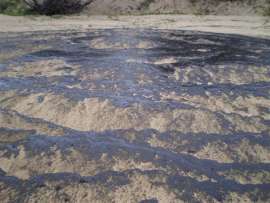
Volunteers from Sunshine Coast TurtleCare, officers from the Sunshine Coast Regional, SCRCCouncil and Queensland’s Environment Protection Agency worked together to protect the remaining nests by containing hatchlings to prevent them running across oil contaminated beaches.
The hatchlings were contained by placing purpose built enclosures that attached simply but securely to the existing fox exclusion mesh barriers that were in place over each nest.
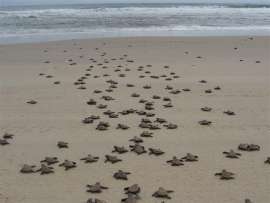
Approximately 300 hatchlings from three nests emerged in the few days immediately following the spill and they were safely released at the unaffected Teewah Beach where they were able to undertake a relatively normal run to the ocean.
Hatchlings from a further three nests in the following days were released at Shelly Beach and Dicky Beach, which were then free of any oil contamination.
Another two nests emerged prior to the permanent removal of the enclosures. The hatchlings were released at the nest site after it was confirmed to be clear of any oil hazard.
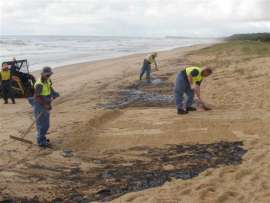
The response to the crisis from volunteers and the wider Sunshine Coast community was overwhelmingly supportive with offers of assistance flooding in to the agencies participating in the clean up.
Discarded fishing line kills wildlife
When fishing line and hooks are carelessly discarded into the environment they have the potential of injuring and killing a wide range of wildlife.
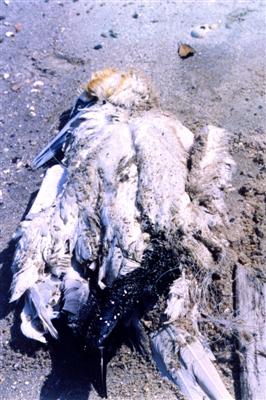
The effects of ghost nets that have been abandoned or lost at sea are well documented. But perhaps not so well known are the devastating effects for some wildlife of carelessly discarded or lost fishing line from recreational fishers.
Fish and marine mammals, birds and reptiles can become entangled in old line or snagged by hooks, resulting in serious injury or death.
Shore birds can become entangled in line while foraging on the shore and land birds will often attempt to incorporate old fishing line into their nests, sometimes with disastrous effects for hatching chicks.
The Sunshine Coast Regional Council, with the assistance of funding from the Federal government’s Caring for our Country grant program, has installed special fishing line recycling bins at key locations on the Sunshine Coast.
A total of twenty-three bins have been placed at boat ramps, near fish cleaning tables and at popular fishing spots on the coast.
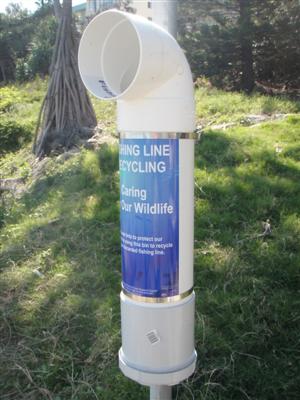
People are urged to use the bins to dispose of any unwanted fishing line and tackle to reduce the amount of line finding its way into the environment.
The new bins follow a successful trial in the Noosa area several years ago and, once the current installations are all done, the bins will be in use right across the region.
How Ghost Nets threaten Sea Turtles
Ghost nets are fishing nets which have been either lost or abandoned at sea.
Sometimes nicknamed “walls of death” they drift on ocean currents indiscriminately catching a wide range of marine animals, including turtles, dugong, sharks and dolphins.
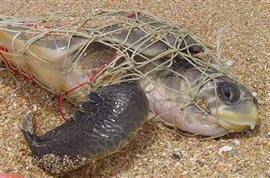
For thousands of years the Gulf of Carpentaria has acted as a catchment for marine debris for the Indo-Pacific region. In the past currents sweeping into the Gulf carried debris like canoes, organic fibre nets, tree logs and other organic material.
Over the last few decades, however, the composition of the debris has changed dramatically.
Nets woven from natural fibres have given way to synthetic nets which are so resilient they can persist in the marine environment for hundreds of years.
Once inside the Gulf, the nets – often still buoyed by floats – become trapped in the clockwise spin of the Gulf of Carpentaria Gyre which is fed by the north-west monsoon pattern.
These “ghost nets” will remain in an endless cycle of washing ashore in storms and back into the spin of the gyre unless they are collected when they are washed ashore.
The growing weight of dead animals in the nets can outweigh the buoyancy of the floats and force the net out of circulation for a while.
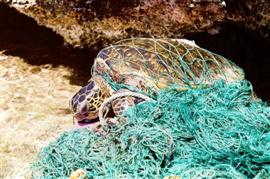
However, after the trapped dead animals break down or get eaten the net’s buoyancy returns and it is set adrift to start the cycle all over again.
The Carpentaria Ghost Net Programme, led by indigenous communities in the Gulf, commenced in 2004 with the assistance of Federal government NHT funding.
In a 50 month period up to July 2009 almost 90,000m of ghost netting had been collected from the Gulf.
Can you imagine the shear size of that netting?
The largest nets found to date in the Gulf were Taiwanese gill nets which stretched out to approximately 4km in length with a drop of 12m.
It is hard to imagine the devastating effect of that netting to sea turtles and other sea life.
Sea turtle books for young and general readers
Books for young readers
The Smallest Turtle by Lynley Dodd
2008, ABC Books
ISBN 0733322085
Little Turtle and the Song of the Sea by Norma Burgin & illustrated by Sheridan Cain
2001, Little Tiger Press
ISBN 1854306200
One Tiny Turtle by Jane Chapman & Nicola Davies
2005, Candlewick Press
ISBN 0763623113
Diego and the Baby Sea Turtles by Warner McGee & Lisa Rao
2001, Crabtree Publishing Co
ISBN 1416954503
Baby Turtle’s Tales by Elle J McGuiness
2009, Andrews McMeal
ISBN 0740781022
Turtle (Watch Me Grow)
2006, Dorling Kindersley Publishers Ltd
ISBN 1405313099
Turtle’s Song by Alan Brown & illustrated by Kim Michelle Toft
2001,University of Queensland Press
ISBN 1702231533
Journey of the Sea Turtle by Mark Wilson
2009, Lothian Books
ISBN 073441109X
Endangered Sea Turtles by Bobbie Kalman
2004 by Crabtree Publishing Co
ISBN 0778718999
Into the Sea by Brenda Z. Guiberson & illustrated by Alix Berenzy
1996, Henry Holt
ISBN 0805022635
Sea Turtles (Undersea Encounters) by Mary Jo Rhodes & David hall
2005, Children’s Press
ISBN 0516243918
Books for general readers
Sea Turtles: A Complete Guide to Their Biology, Behaviour and Conservation by James R Spotila
2004, The John Hopkins Press
ISBN 0801880076
Voyage of the Turtle: In Pursuit of the World’s Last Dinosaur by Carl Safina
2007, Owl Books, Henry Holt Co.
ISBN 0805083189
Sea Turtles: An Extraordinary Natural History of Some Uncommon Turtles by Blair Ernest Witherington
2006, Voyager Press
ISBN 100760326444
Interrupted Journey: Saving Endangered Sea Turtles by Kathryn Lasky & Christopher G. Knight
2001, Candlewick Press
ISBN 0763606359
The Biology of Sea Turtles, by Peter L. Lutz, John A. Musick
1996, CRC Press
ISBN 0849384222
The Biology of Sea Turtles, Vol 2 by Peter Lutz, John A. Musick & Jeanette Wyneken
1996, CRC Press
ISBN 0849311233
Sea Turtles: An Ecological Perspective by David Gulko & Karen Eckert
2004, Mutual Publishing Co
ISBN 1566476518

